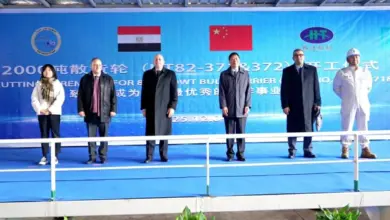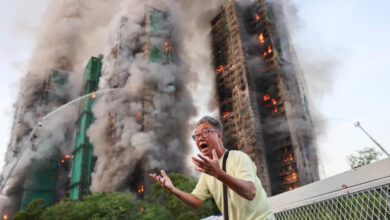
Accused of plotting treason with Cambodia’s detained opposition leader, the US embassy posted a picture of a red herring on its Facebook page.
The cryptic suggestion that the accusations were false – a mystifying reference for many Cambodians – was followed by further posts on Monday showing how U.S. aid was helping to preserve temples and forests.
Those posts also underscored the big difference between aid from the United States and aid from China, whose greater support for big ticket projects has helped allow Prime Minister Hun Sen to brush off criticism over the arrest of election rival Kem Sokha.
Not only is China vastly outspending the United States in a country once destroyed by Cold War superpower rivalry, but its money goes on highly visible infrastructure projects and with no demands for political reform.
US aid goes more toward social projects and trying to build democracy – unwanted interference for the government of a prime minister who has ruled for over 30 years.
“Taking aid doesn’t mean they can order us to do what they want. We aren’t their ally. We aren’t their slave,” government spokesman Phay Siphan told Reuters. “The Chinese always support us in economic growth and they never interfere in our decisions.”
The US embassy made no immediate comment.
Cambodia has dismissed U.S. and Western criticism of the Sept. 3 arrest of opposition leader Kem Sokha. China has backed Hun Sen.
“To ensure the security of Cambodia, China will cooperate with Cambodia in all circumstances,” Wang Jiarui, vice chairman of China’s national assembly, said in Phnom Penh last week, according to the official Cambodian record.
The support doesn’t only run one way. China relies on Cambodia in Southeast Asian meetings on issues such as its claims in the South China Sea. In Cambodia, China’s military has also gained a strategic foothold.
Figures from Cambodia’s overseas development aid database show how important China has become.
It accounted for nearly 36 percent of $732 billion listed in bilateral aid for 2016 – nearly four times as much as from the United States. Most of the rest is from other Western countries, whose protests have also been dismissed.
INVESTMENT GIANT
The disparity is even starker in investment.
China provided nearly 30 percent of investment capital in Cambodia last year – more than Cambodians themselves. The United States accounted for only just over three percent.
Meanwhile, US President Donald Trump’s proposed aid cuts have pointed to a possible 70 percent reduction in US assistance to Cambodia from 2018, according to a draft proposal.
What Cambodia gets from the United States and China is very different. Chinese projects include roads, bridges, irrigation systems, electrical transmission infrastructure and dams.
The list of US projects is much longer, but they are much smaller: in education, health, conservation as well as efforts to build democracy which grate on the government.
The US funded National Democratic Institute (NDI) pro-democracy group was expelled last month and accused of conspiring to help bring down Hun Sen – a charge rejected by the NDI and the opposition Cambodia National Rescue Party (CNRP).
“The fact the government has been criticized by Western donors over the recent crackdown just means Cambodia is becoming more dependent on China,” said Ou Virak of the Future Forum thinktank.
The United States is a much bigger export market than China, particularly for Cambodia’s garment factories, but the United States has not publicly suggested it could use trade to bring pressure for democratic change.
Kem Sokha’s deputy, Mu Sochua, said aid that did not include conditions on human rights did not serve Cambodia well.
“Cambodia needs China, it needs America, it needs democracy to pull it out of many years of poverty,” she told Reuters.
But Cambodia depends much less on aid than it did.
This year will mark the seventh year of near 7 percent growth or above – a fact Hun Sen often points to in a country he took over after the devastating “killing fields” genocide committed by the Khmer Rouge, in which he was once a commander.
World Bank figures show overseas development assistance fell from over 120 percent of central government expenditure in 2002 to barely 32 percent in 2015. Per capita gross domestic product rose from less than $340 in 2002 to nearly $1,300 last year.
Dismissing US interference in a speech on Monday, Hun Sen threatened a possible ban on the opposition party.
Then he took a plane for Beijing where he said he would seek money for the health sector – an area dominated by Western donors until now.




